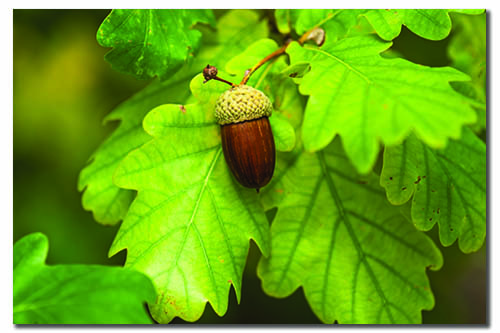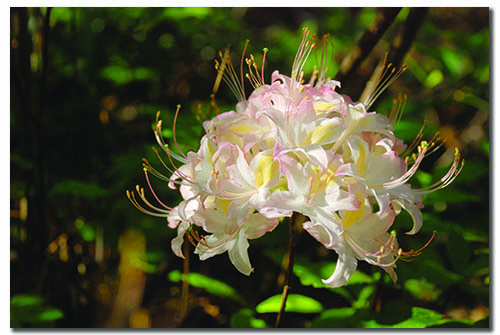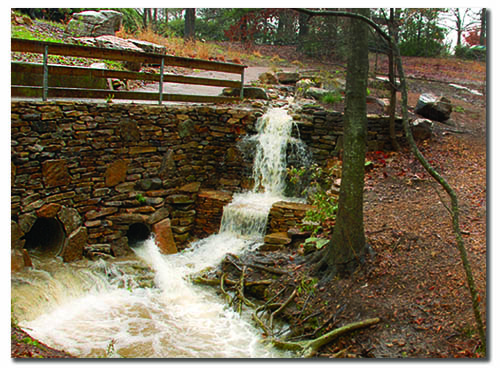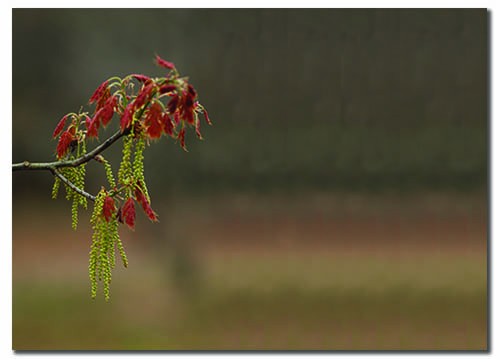Arboretum awarded Level III accreditation through ArbNet
 The Donald E. Davis Arboretum was awarded Level III accreditation through the ArbNet program. The accreditation recognizes the arboretum’s collection, display, and dedication to woody plants, such as trees and shrubs, for public benefit, scientific knowledge, and conservation.
The Donald E. Davis Arboretum was awarded Level III accreditation through the ArbNet program. The accreditation recognizes the arboretum’s collection, display, and dedication to woody plants, such as trees and shrubs, for public benefit, scientific knowledge, and conservation.
The arboretum showcases a collection of native plants from the southeastern U.S. and is situated on 14 acres of the university’s main campus. This year marks the 50th anniversary of the garden, which has a strong focus on Alabama’s plants and natural habitats.
The core collections of the arboretum include oaks, carnivorous plants, and native azaleas.
The arboretum offers educational programming for all ages and serves as an extension of the classrooms for most of the colleges on campus. Local school children and master gardeners share the opportunity to immerse themselves in a variety of recreated environments and learn about the plant communities associated with them. Visitors find representations of Alabama’s coastal dunes, blackbelt prairies, longleaf pine savannahs, pitcher plant bogs, sandstone outcrops, dolomitic limestone glades, and even shaded slopes from the foothills of the Appalachian Mountains. All of these installations are used to teach the volume and value of the immense biodiversity that grows in Alabama.
 The arboretum boasts almost 900 trees with an estimated worth of $2 million. The total collection of trees and woody plants includes examples of more than 300 different species and can be divided into three primary groups: oak trees, large trees, and small trees
The arboretum boasts almost 900 trees with an estimated worth of $2 million. The total collection of trees and woody plants includes examples of more than 300 different species and can be divided into three primary groups: oak trees, large trees, and small trees
and shrubs.
The oak tree collection includes examples of all 39 species native to the southeastern U.S. Noteworthy among the oaks is a post oak called the “Founder’s Oak,” which measures 88 feet tall, 47.3 inches in diameter, and 89 feet across the crown width. Additionally, the oak collection was accepted in 2010 to the North American Plant Collection Consortium. As part of the American Association of Botanical Gardens and Arboreta, the NAPCC represents a network of botanical gardens that take responsibility for collecting and preserving specific plant groups and the genetic resources they represent. NAPCC members hold botanically significant collections and make germ plasm available for taxonomic studies, evaluation, breeding, and other research.
The arboretum also teamed up with the Alabama Plant Conservation Alliance to preserve the Boynton Oak, a dwarf oak that is exclusively found in Alabama and is one of the state’s rarest plants. The arboretum and the APCA are actively seeking out the Boynton Oak, Quercus boyntonii, and preserving the unique trees in both collections and in the wild.
 In addition to the nationally recognized collection of oak trees are 116 species of other large trees, and 167 species of small trees and shrubs. To educate the public and Auburn University students on the species found in the arboretum, self-guided tours have been installed. The tours are open to the public and are guided by brochures containing maps of species locations in the arboretum. Anyone interested in taking a tour can pick up a brochure at the arboretum pavilion.
In addition to the nationally recognized collection of oak trees are 116 species of other large trees, and 167 species of small trees and shrubs. To educate the public and Auburn University students on the species found in the arboretum, self-guided tours have been installed. The tours are open to the public and are guided by brochures containing maps of species locations in the arboretum. Anyone interested in taking a tour can pick up a brochure at the arboretum pavilion.
The arboretum serves as a testing ground for sustainable practices on campus, and as part of his master’s thesis project, Nicholas Martin, a recent graduate in forestry, estimated that the trees in the arboretum alone provide 508,513 pounds of carbon storage and 21,302 pounds of carbon sequestration per year. Compared with the rest of campus, the arboretum sequesters six times the amount of carbon per hectare. The arboretum’s trees are also responsible for an average of 16 percent of the total pollution removal on Auburn’s campus, including carbon monoxide, ozone, nitrogen dioxide, and sulfur dioxide.
“Our students love hands-on programs and classes where they can actually get outdoors and get involved with the immediate environment and see what’s happening around campus,” said Nanette Chadwick, director of academic sustainability programs. “Many of our students will go into careers where they will actually be planning landscapes, planning buildings, working as city planners, and other jobs where they will be directly involved with trying to implement sustainable practices. The arboretum is really one of our shining examples on campus of a spot where the resources are being managed very well, very sustainably, and these are the practices we teach our students are important for creating a sustainable society.”
For more information on the Level III accreditation through Arbnet, visit http://arbnet.org/. For more information on the arboretum, go to www.auburn.edu/arboretum.
- Photos courtesy of the Donald E. Davis Arboretum.

